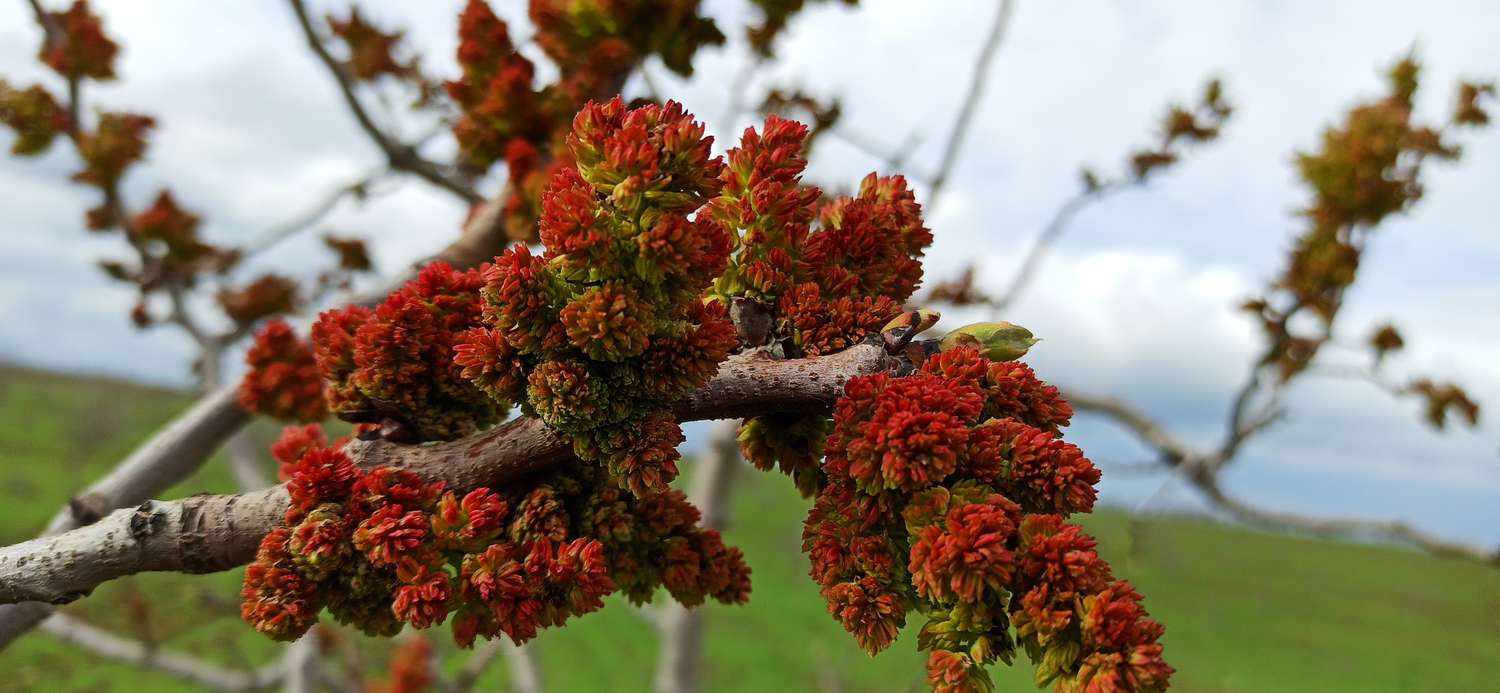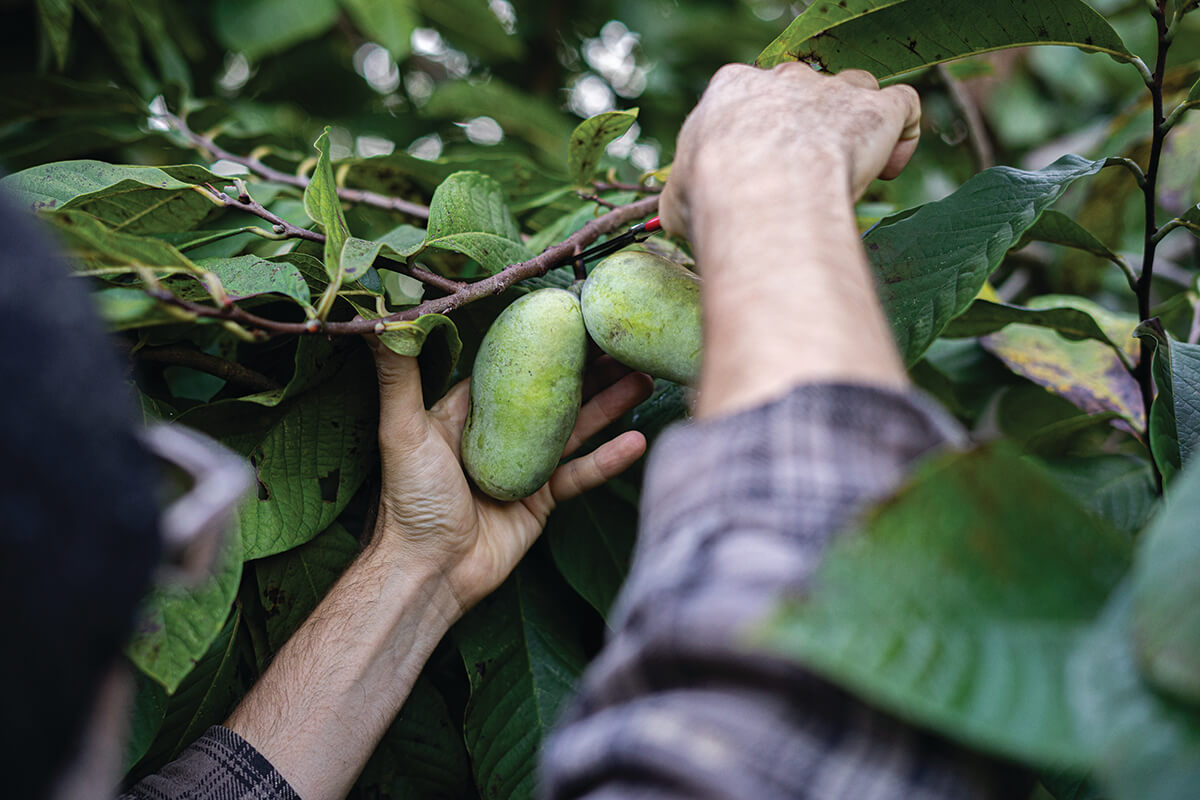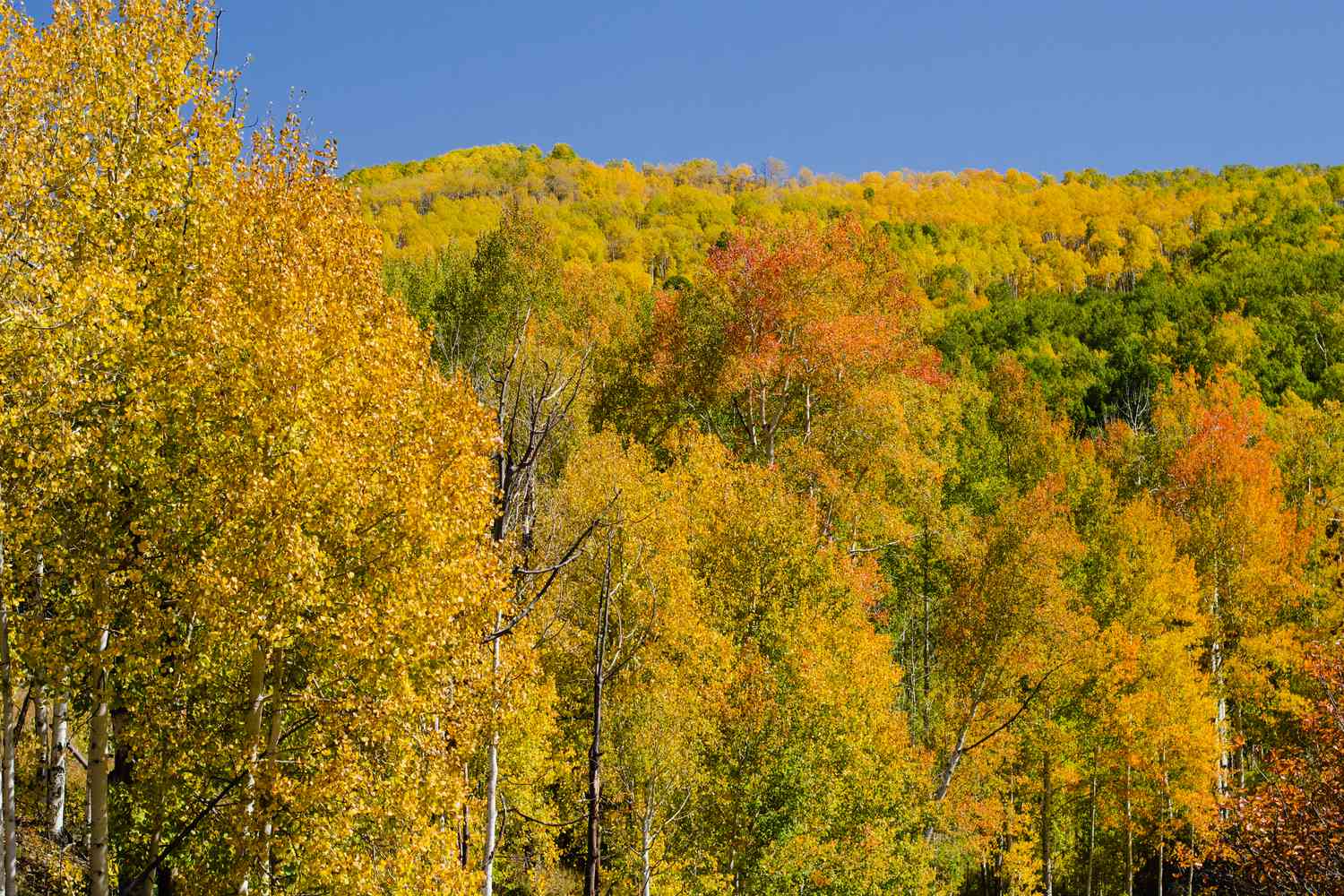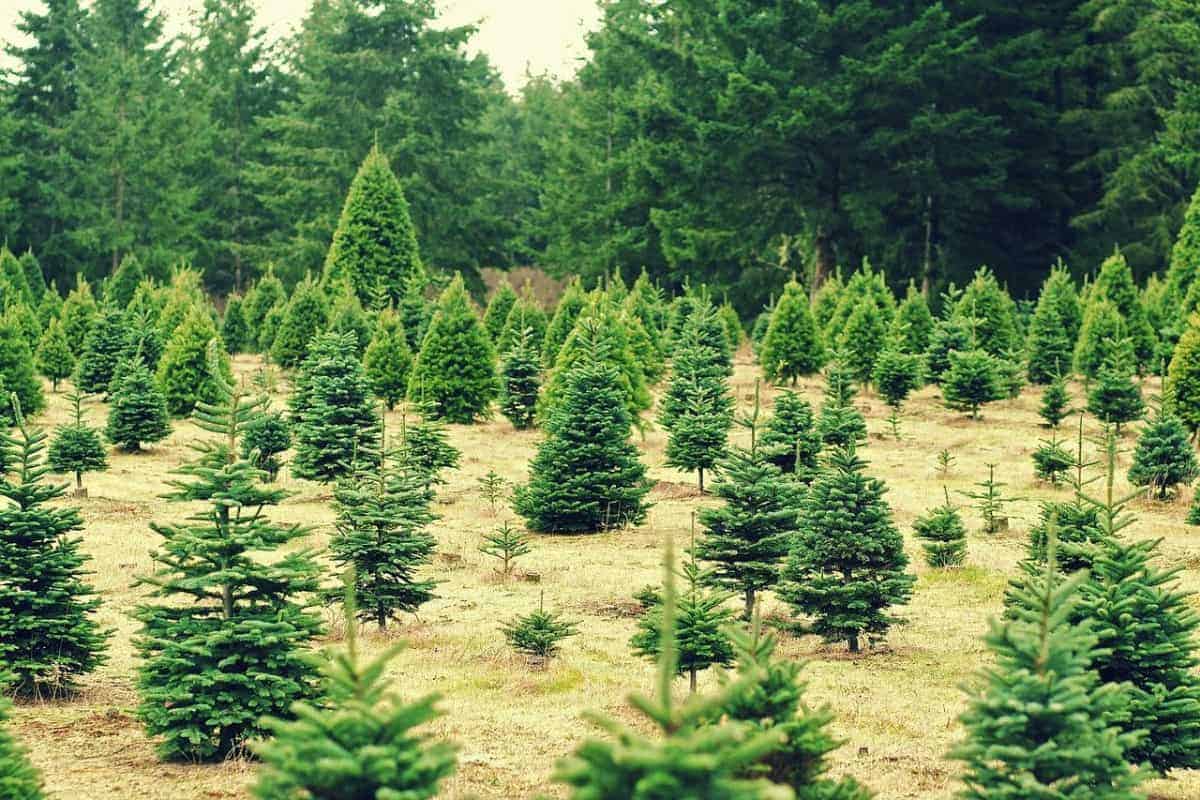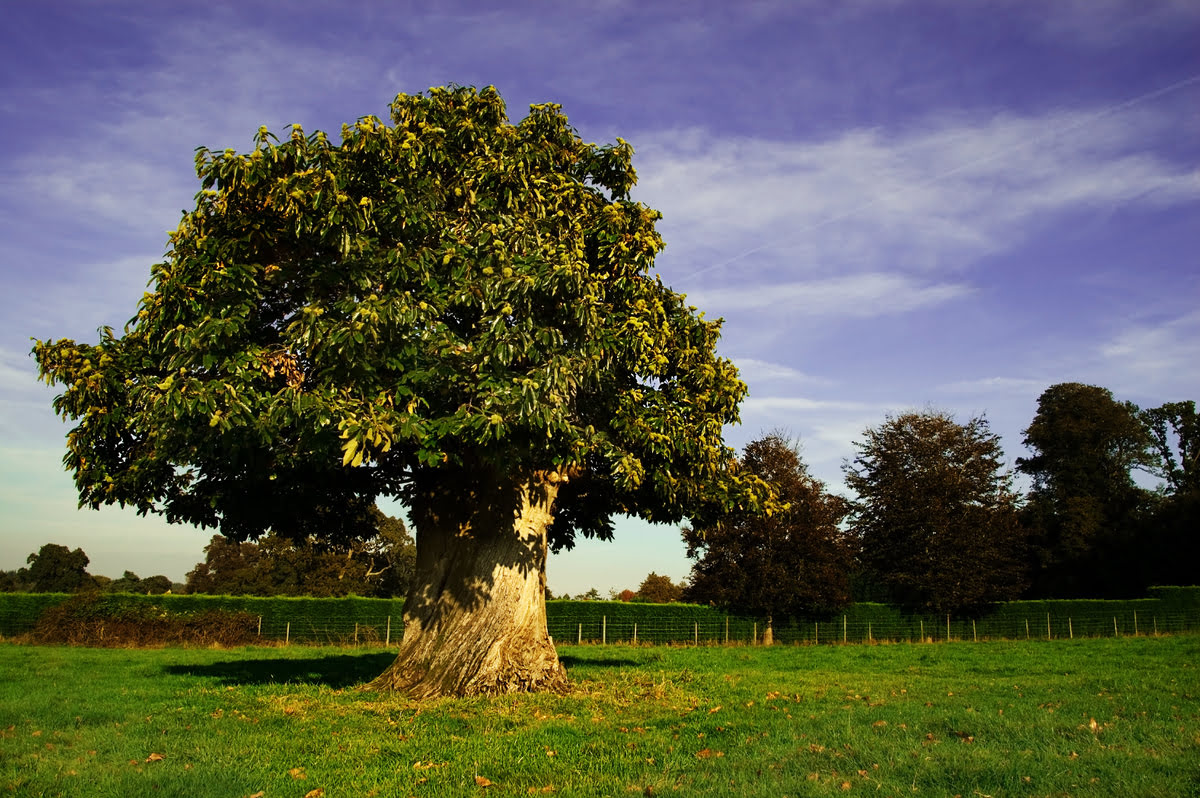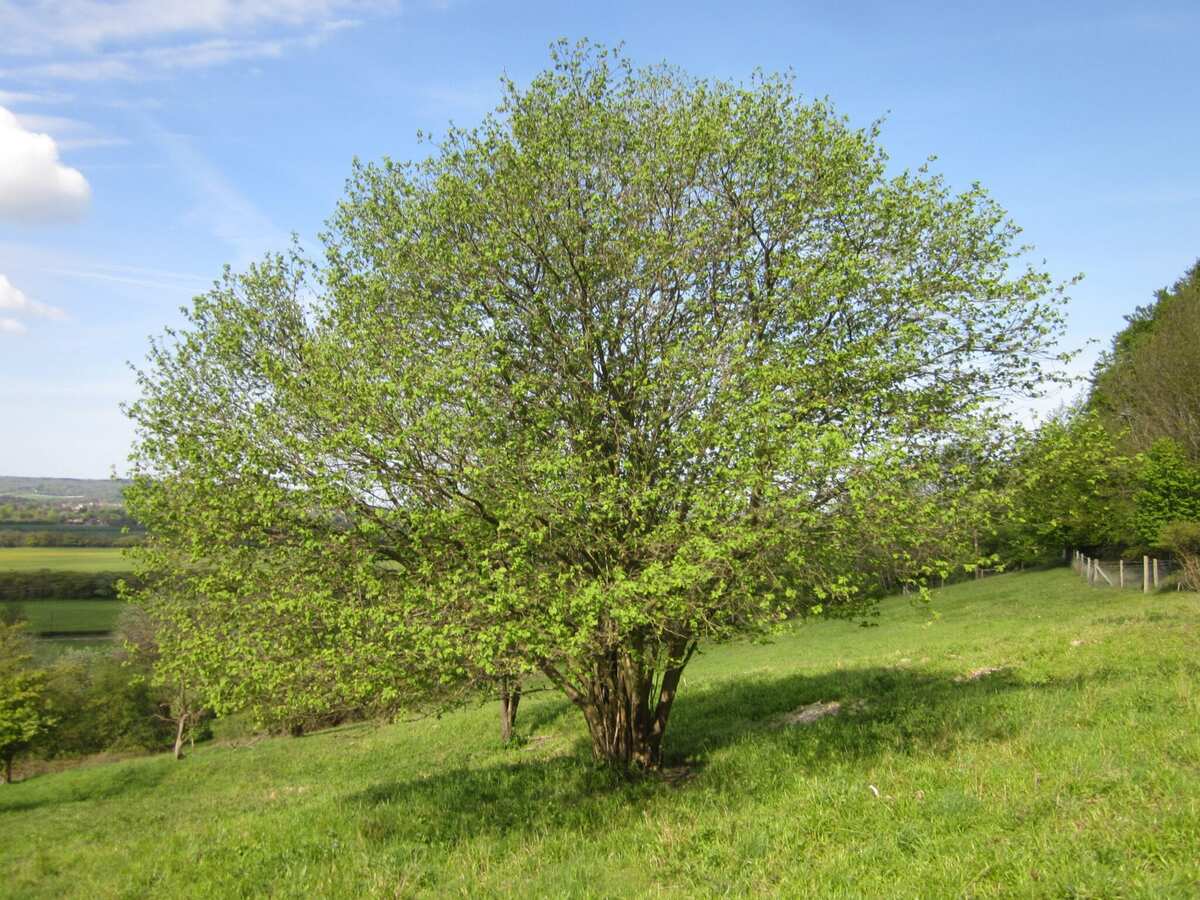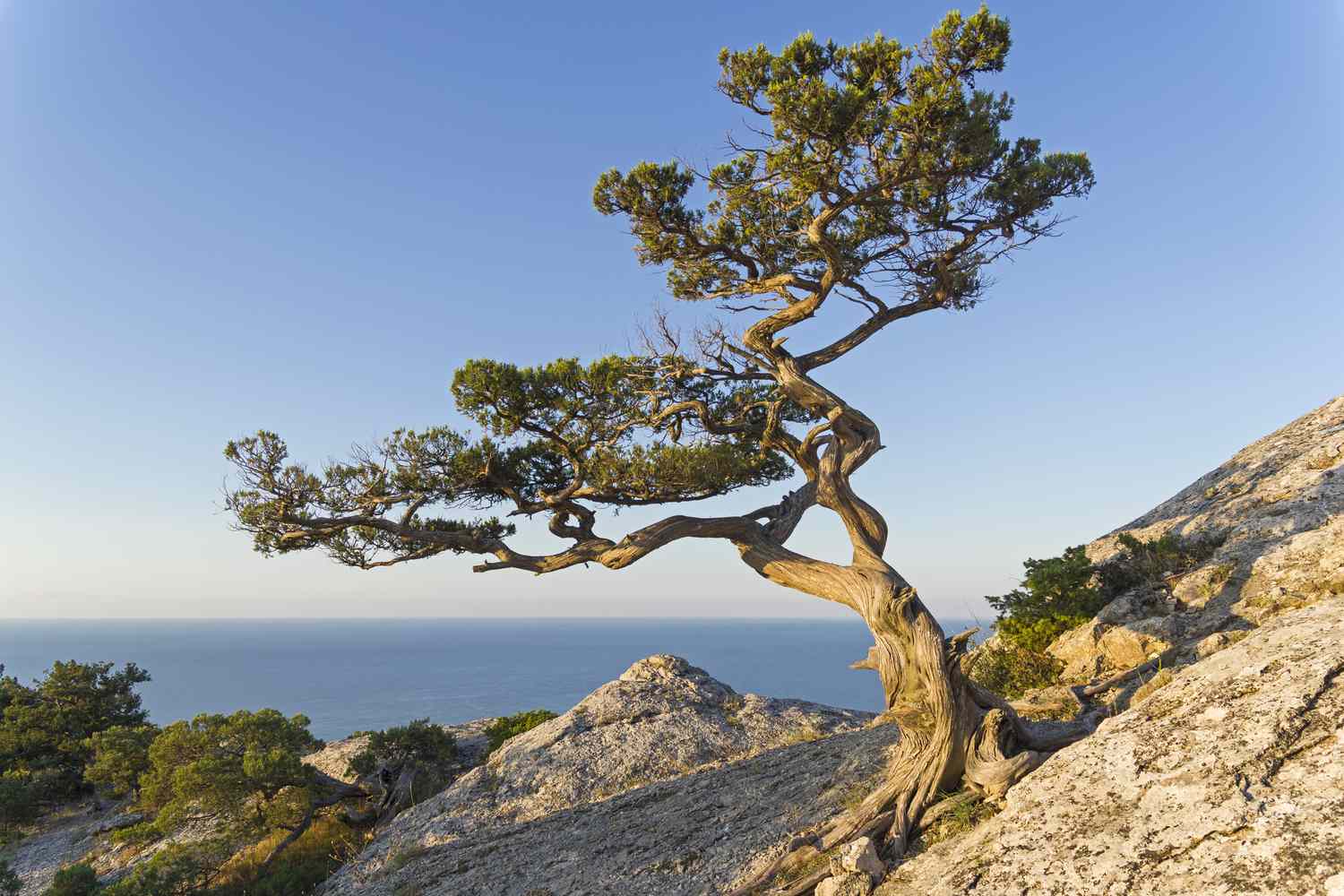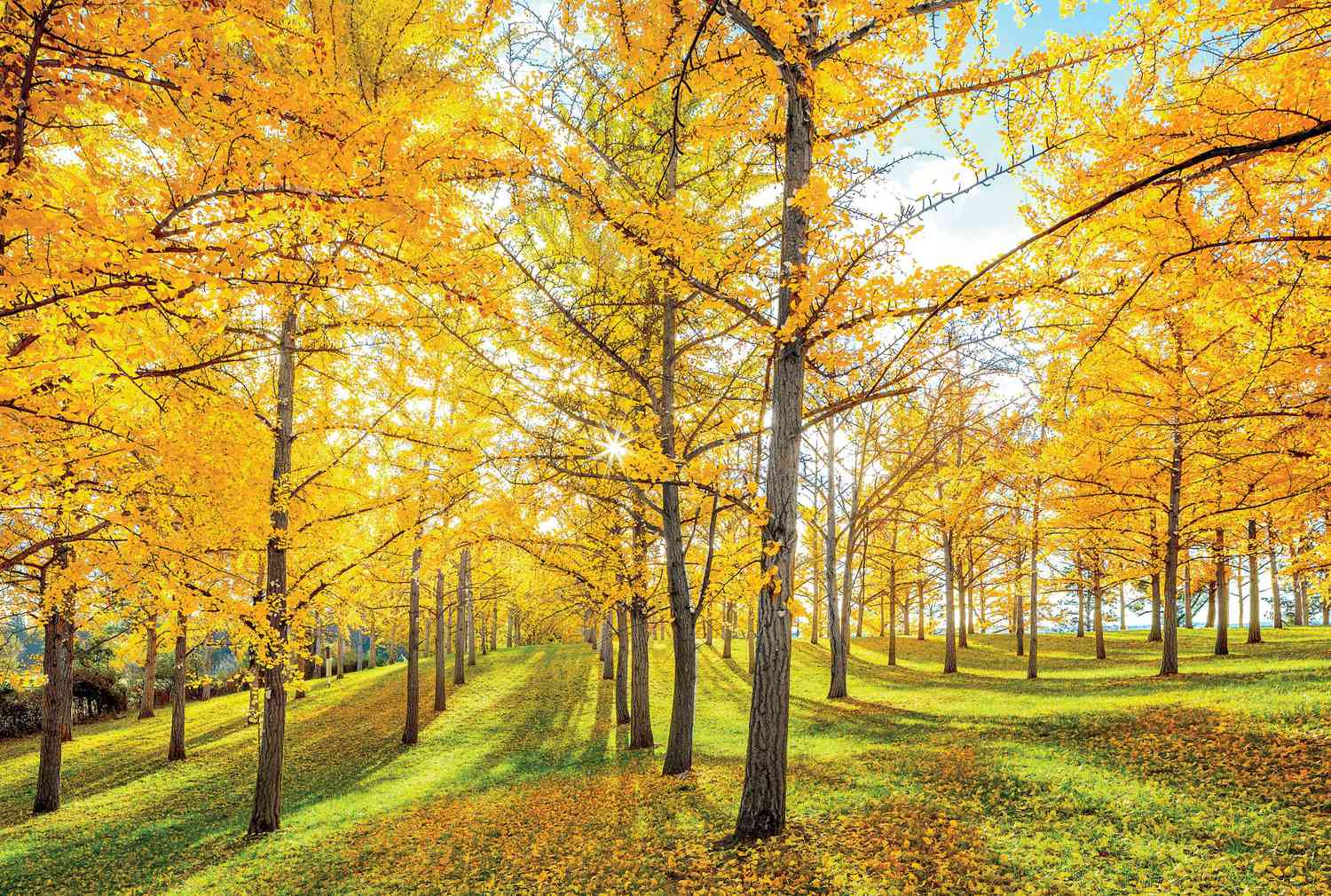Home>Gardening Techniques>Plant Care>Where Do Joshua Trees Grow
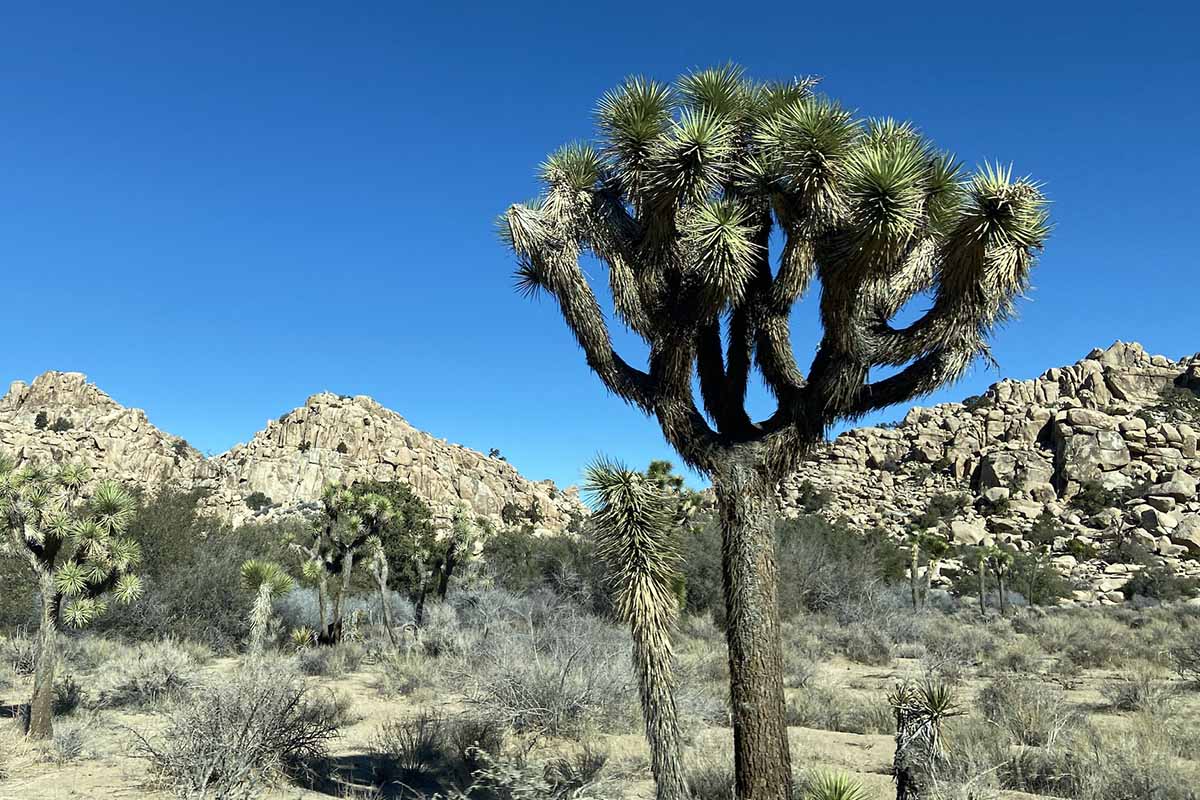

Plant Care
Where Do Joshua Trees Grow
Modified: January 22, 2024
Discover the ideal conditions for Joshua tree plant care and learn where these unique trees grow. Enhance your gardening knowledge and create a thriving Joshua tree habitat.
(Many of the links in this article redirect to a specific reviewed product. Your purchase of these products through affiliate links helps to generate commission for Chicagolandgardening.com, at no extra cost. Learn more)
Table of Contents
Introduction
Joshua trees (Yucca brevifolia) are iconic and unique plants that thrive in some of the harshest environments. Named after the biblical figure Joshua, these trees have become symbols of the American Southwest’s arid landscapes. With their intriguing growth patterns and adaptability, Joshua trees have captured the fascination of botanists, nature lovers, and adventurers alike.
Despite their tree-like appearance, Joshua trees are actually a species of yucca, belonging to the Agavaceae family. They have stout, succulent trunks with spiky, evergreen leaves that can reach up to three feet long. The trees can grow up to 40 feet in height, though some individuals may exceed 60 feet under optimal conditions.
Native to the southwestern United States, Joshua trees are primarily found in California, Nevada, Utah, and Arizona. They are also known to inhabit parts of Mexico. However, their distribution is limited to specific habitats due to their specific needs for survival in arid and desert-like environments.
In this article, we will explore the habitat of Joshua trees and their geographic distribution, as well as their preferences for climate, soil, and elevation. We will also delve into how Joshua trees interact with other species in their ecosystems and discuss the threats they face and their conservation status.
By gaining a better understanding of Joshua trees and their unique natural environment, we can appreciate the beauty and resilience of these remarkable plants, as well as highlight the importance of protecting and preserving their habitats.
Habitat of Joshua Trees
Joshua trees are well-adapted to thrive in some of the most arid and inhospitable environments. They are primarily found in the Mojave Desert in southwestern North America, which spans parts of California, Nevada, Utah, and Arizona. Within this region, Joshua trees have a specific habitat preference characterized by unique soil conditions, elevation ranges, and climatic factors.
One key factor in the habitat of Joshua trees is the soil type. They prefer well-drained sandy or gravelly soils, as these types of soils allow water to quickly percolate through and prevent root rot. The coarse texture of the soil also allows the trees’ roots to anchor firmly despite the strong winds that can occur in desert environments.
Another important aspect of their habitat is the elevation range in which they can be found. Joshua trees typically grow at elevations between 2,000 and 6,000 feet (610 to 1,830 meters) above sea level. This elevation range provides the right combination of temperature, moisture, and sunlight for their growth and development.
Furthermore, Joshua trees have a strong preference for areas with minimal competition from other plant species. They tend to colonize areas with open spaces, such as washes, valleys, and desert plains. Their tall stature and wide-spreading branches allow them to capture sunlight without being shaded by other vegetation.
In addition to these factors, wildfire plays a vital role in the habitat of Joshua trees. While other plants may be damaged or destroyed by wildfires, Joshua trees have developed a unique adaptation that allows them to survive and even benefit from these natural events. Their thick bark and fire-resistant properties enable them to withstand wildfires, and the intense heat can actually stimulate their seed germination process.
It’s important to note that the habitat of Joshua trees is not static. Environmental changes, including factors such as climate change and human activities, can impact their habitat suitability. Understanding these dynamic factors is crucial for conservation efforts and ensuring the long-term survival of these iconic desert trees.
Geographic Distribution
The geographic distribution of Joshua trees is largely restricted to the southwestern United States, primarily in the Mojave Desert. They are native to California, Nevada, Utah, and Arizona, with their range extending into parts of Mexico. However, the distribution of Joshua trees within this region is not uniform, and they are influenced by various factors including climate, elevation, and soil conditions.
California is home to the largest population of Joshua trees, with their distribution extending from the western Mojave Desert to the eastern edge of the state. They can be found in national parks and protected areas such as Joshua Tree National Park, Mojave National Preserve, and Death Valley National Park.
In Nevada, Joshua trees are primarily found in the southern part of the state, occupying areas within the Mojave Desert. This includes regions such as Clark County and Nye County.
Utah also hosts a small population of Joshua trees, although their distribution is more limited compared to neighboring states. They are mainly concentrated in the southwestern corner of the state, in areas such as Washington County and Beaver County.
Arizona is another state that provides a suitable habitat for Joshua trees. They can be found in various counties, including Mohave County, Yavapai County, and Coconino County. The boundaries of their distribution in Arizona are determined by factors such as elevation and soil type.
Outside of the United States, Joshua trees have a relatively small presence in Mexico. They are found in the states of Baja California, Baja California Sur, and Sonora. However, their distribution in Mexico is more fragmented and localized compared to the expansive populations found in the United States.
Overall, the geographic distribution of Joshua trees is intricately linked to the specific environmental conditions required for their survival. Understanding the range and limitations of their distribution plays a crucial role in conservation efforts and the protection of these unique desert trees.
Climate Preferences
Joshua trees have specific climate preferences that allow them to thrive in the arid environments of the southwestern United States and parts of Mexico. They are well-adapted to withstand the extreme temperatures and minimal rainfall characteristic of desert regions.
One key aspect of their climate preference is the high temperature tolerance. Joshua trees are able to survive in regions with scorching summer temperatures that can exceed 100°F (38°C) during the day. Their ability to withstand such heat is due to their thick, waxy leaves, which help minimize water loss through evaporation.
In addition to heat tolerance, Joshua trees have a remarkable ability to endure cold temperatures as well. They can withstand freezing temperatures that dip below 30°F (-1°C) during the winter months. Their resilience to cold temperatures is attributed to their ability to store water in their succulent leaves and trunks, which provides them with insulation against frost damage.
Another crucial factor in the climate preference of Joshua trees is the limited amount of annual precipitation they require. They are adapted to survive in areas with an average annual rainfall of 5 to 15 inches (13 to 38 cm), primarily occurring during the winter months. Their ability to endure long periods of drought is aided by their extensive root systems, which allow them to tap into deep water sources and efficiently absorb available moisture.
Joshua trees also rely on seasonal patterns of rainfall for their reproductive cycle. They require a specific amount and timing of rainfall to trigger flowering and subsequent seed production. This dependence on periodic rainfall makes their population dynamics sensitive to climate variability and changes in precipitation patterns.
Overall, Joshua trees have evolved to thrive in the harsh desert climate, showcasing their adaptability and resilience. Understanding their specific climatic requirements is essential for their conservation and management, particularly in the face of climate change and the potential for altered precipitation patterns in their habitats.
Soil Requirements
The soil requirements of Joshua trees play a significant role in their ability to survive and thrive in arid environments. These unique trees have specific preferences when it comes to soil type and composition, enabling them to adapt to the often challenging conditions of their habitats.
Joshua trees thrive in well-drained sandy or gravelly soils. The ideal soil composition for their growth is characterized by a coarse texture that allows water to quickly percolate through, preventing the roots from becoming waterlogged. This is essential for their survival in the arid environments they inhabit.
Moreover, Joshua trees have evolved to tolerate soils with low nutrient content. They can grow in nutrient-poor soils, often found in desert regions, thanks to their efficient nutrient uptake system. Their roots have special adaptations that allow them to explore a large volume of soil in search of scarce nutrients, maximizing their nutrient intake and reducing their reliance on nutrient-rich soils.
The pH preference of Joshua trees ranges from slightly acidic to alkaline. They can tolerate a wide pH range, typically found in desert soils, which can fluctuate due to natural processes such as weathering, erosion, and mineral deposits. Their ability to withstand varying pH levels contributes to their adaptability and ability to colonize different areas.
Another crucial soil requirement for Joshua trees is soil stability. Given their tall stature and wide-spreading branches, they need soils that are stable enough to support their weight. The coarse texture of sandy or gravelly soils provides good stability, allowing the trees to anchor themselves firmly. This is particularly important in desert environments where strong winds can be prevalent.
Overall, Joshua trees have specific soil preferences that enable them to survive in the harsh conditions of arid environments. Their ability to grow in well-drained, nutrient-poor soils with a wide pH range and soil stability showcases their adaptability to the unique ecosystems they call home.
Elevation Range
The elevation range in which Joshua trees are found is an important factor in their distribution and habitat preferences. These trees have a specific range of elevation in which they can grow and thrive, allowing them to adapt to the unique conditions of different mountain ranges and desert terrains.
Joshua trees typically grow at elevations between 2,000 and 6,000 feet (610 to 1,830 meters) above sea level. This range provides them with the optimal combination of temperature, moisture, and sunlight required for their growth and development.
At lower elevations, Joshua trees encounter higher temperatures and drier conditions. These areas tend to be hotter and receive less precipitation, posing challenges for their survival. In contrast, higher elevations offer slightly cooler temperatures and may receive slightly more rainfall due to factors such as orographic lift. This makes higher elevations more favorable for Joshua trees, as they provide relief from extreme heat and offer slightly better moisture conditions.
It’s important to note that the specific elevation range in which Joshua trees are found may vary depending on the local topography and geographical features. For example, in lower lying valleys and basins, such as the Coachella Valley in California, Joshua trees can be found at elevations as low as 500 feet (150 meters) due to unique microclimates and soil conditions.
On the other hand, in mountainous regions, Joshua trees can be found at higher elevations due to the cooler temperatures and increased moisture availability. This is particularly evident in the higher slopes of the Mojave Desert, where Joshua trees can be found growing at elevations exceeding 7,000 feet (2,130 meters).
The specific elevation range in which Joshua trees grow is a result of their adaptation to the environmental conditions found in different altitudes. Understanding their preferences for elevation range is crucial for their conservation, as it helps identify suitable habitats and prioritize conservation efforts in the face of potential shifts in climate and land use.
Interactions with Other Species
As an integral part of their desert ecosystems, Joshua trees interact with a variety of other species, forming complex ecological relationships. These interactions play a significant role in shaping the biodiversity and functioning of their habitats. Let’s explore some of the key interactions that Joshua trees have with other species.
One of the most well-known interactions is between Joshua trees and the yucca moth (Tegeticula spp.). These moths are the primary pollinators of Joshua trees and have a mutualistic relationship with the trees. The yucca moth lays its eggs inside the flowers of the Joshua tree and, in the process, pollinates them. Once the eggs hatch, the larvae feed on a small portion of the developing seeds, ensuring the survival of both the moth and the tree.
Joshua trees also provide important habitat and resources for other desert animals. Their unique branching structure provides shelter and nesting sites for birds like the ladder-backed woodpecker and the Scott’s oriole. Birds and insects, in turn, contribute to the ecosystem by dispersing Joshua tree seeds and pollinating other plant species in the area.
Furthermore, Joshua trees play a crucial role in the survival of several rodent species, such as the desert woodrat and the antelope ground squirrel. These rodents rely on the fallen seed pods and fruit of Joshua trees as a food source. In turn, they contribute to seed dispersal by caching seeds and inadvertently creating new places for seed germination.
Joshua trees also have a fascinating relationship with symbiotic fungi known as mycorrhizae. Mycorrhizal fungi establish a mutually beneficial association with the tree’s roots, providing increased nutrient absorption in exchange for carbohydrates produced by the tree through photosynthesis. This relationship helps Joshua trees access nutrients in nutrient-poor soils, enhancing their ability to survive and thrive in arid environments.
Overall, Joshua trees form intricate connections with a diverse array of species in their ecosystem. These interactions highlight the importance of maintaining and protecting their habitats to ensure the survival of not only the Joshua tree, but also the plants and animals that depend on them for their existence.
Threats and Conservation Status
Despite their resilient nature, Joshua trees face several threats that pose challenges to their survival. Understanding these threats is crucial for implementing effective conservation measures and ensuring the long-term existence of this iconic desert species.
One significant threat to Joshua trees is climate change. As desert ecosystems become more arid and temperatures rise, the survival of Joshua trees is at risk. Changing precipitation patterns and increased frequency of extreme weather events can disrupt their reproductive cycle and limit their ability to regenerate. Additionally, warmer temperatures can create more favorable conditions for insect pests and diseases that can negatively impact the health of Joshua trees.
Human activities also pose a threat to Joshua trees. Habitat destruction due to agriculture, urbanization, and infrastructure development can lead to the fragmentation and loss of their natural habitats. Furthermore, off-road vehicle use, illegal poaching, and vandalism can directly harm the trees and disrupt their ecosystems.
Invasive species represent another significant threat. Non-native plants, such as the red brome grass and Sahara mustard, can outcompete native vegetation and alter the fire regimes in Joshua tree habitats. These invasive species can result in changes to the ecosystem dynamics and negatively impact the growth and survival of Joshua trees.
Recognizing the need for conservation, significant efforts have been made to protect Joshua trees. They have been classified as a species of concern and are afforded some level of protection under the federal Endangered Species Act. In addition, Joshua Tree National Park, Mojave National Preserve, and other protected areas serve as important refuges for these trees.
To mitigate the threats faced by Joshua trees, conservation efforts focus on a combination of habitat preservation, restoration, and public awareness. Resource management practices aim to reduce habitat destruction and control the spread of invasive species. Restoration efforts involve planting native vegetation and promoting natural regeneration of Joshua trees in degraded areas. Public outreach and education campaigns raise awareness about the importance of preserving these unique desert ecosystems.
Continued research is vital for understanding the complex dynamics of Joshua tree ecosystems and informing conservation strategies. By working together to protect their habitats and mitigate the threats they face, we can ensure the long-term survival of Joshua trees for future generations to appreciate and enjoy.
Conclusion
Joshua trees are remarkable and unique plants that have captured the fascination of people around the world. Their ability to thrive in the harsh environments of the desert is a testament to their adaptability and resilience. Understanding their habitat preferences, geographic distribution, and ecological interactions provides valuable insights into their conservation and management.
From their specific soil requirements and elevation range to their intricate relationships with other species, Joshua trees have evolved to thrive in arid environments. Their pollination by yucca moths, the provision of habitat for birds and rodents, and their symbiotic relationship with mycorrhizal fungi highlight their ecological importance within their ecosystems.
However, Joshua trees face numerous challenges that threaten their survival. Climate change, habitat destruction, invasive species, and human activities pose significant threats to their populations. Conservation efforts, such as habitat protection, restoration, and public awareness, are crucial to ensuring their long-term survival.
By appreciating and understanding the beauty and resilience of Joshua trees, we can work towards preserving their habitats and fostering a sustainable future for these iconic desert trees. As stewards of the environment, it is our responsibility to protect and conserve these unique ecosystems, not only for the sake of Joshua trees but also for the plethora of other plant and animal species that depend on them.
Let us continue to advocate for the preservation of Joshua trees and their habitats, so that future generations can experience the awe-inspiring landscapes and appreciate the rich biodiversity that they contribute to.
